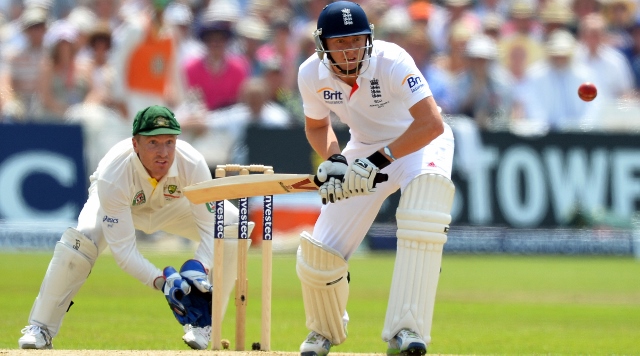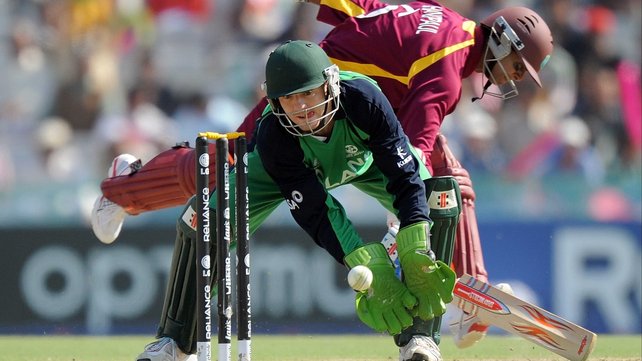Conor Bates | Sports Editor
Although the hours that the television coverage takes place at is unsavoury at its best description, few could have failed to miss the British media laud the exploits of Stuart Broad on the first day of the Ashes’ first test. The Australians were far less complementary, blurring out Broad’s face from their newspapers, referring to him only as a “medium pace bowler” and making an exceptional amount of references to the cheating incident which marred last year’s Ashes series, and was seen to sully the game, and its traditional code of good sportsmanship.
The first series was not short on drama; Broad took six wickets in the first innings, while England then capitulated twice, at the hands of irrepressible bowler Mitchell Johnson. England fell apart while chasing 561 runs, losing their final seven wickets for less than forty runs, as Australia cruised to an opening victory on home soil, in their attempt to reclaim the Ashes. Having not held the Ashes since a 2-1 loss to England in 2009, this edition looks to be the first real chance for Australia to regain the greatest prize in international test cricket.
With the second test wrapping up yesterday, the quest will go on for almost another month, finishing in the first week of January. Taking into account the time difference, which makes this iteration of the series a tough watch, the question does remain, is anyone watching? Are only die-hard, niche fans staying up until the early morning to watch five days of first class sport at a time? Does anyone care about the Ashes anymore?
The advent of soundbite culture has done little good for the likes of test cricket. With the pace the world moves at these days, the prospect of enduring five days of bowling and batting has become a dying facet of our sporting mindset, confined to yore, romance and tradition. As it stands, the concept of sitting through five days of ennui, with the possible outcome being a draw, is just not an attraction for most people anymore. Only the true cricket enthusiasts will really endorse the format as it stands, in the name of honour, rivalry, tradition and sportsmanship that The Ashes has come to represent. Even at that, many ‘fans’ resort to a large amount of drinking to get them through the long days of test cricket.
Snooker faced a similar problem a number of years ago, as long sessions at the World Championships saw television figures and early round attendance waning. They tried everything; pumping in entrance music, á la darts, gave a minimal lift at the start of a game. ‘Power Snooker’ was a failed format that was rightly swept under the rug as one of Barry Hearn’s notable failures. The only successful innovation they had was the ‘Snooker Shootout’, which attracted a reasonable volume of people to Blackpool for a day of one-frame, knockout, shot-clock-controlled snooker. This proved somewhat popular with enthusiasts, and was not dissimilar to cricket’s own innovation: Twenty20.
Twenty20 is to cricket what penalty shootouts are to football. A typical Twenty20 game lasts for three hours, is fast paced with some powerful batting, and with the system of powerplays involved, it can often be unpredictable and very exciting. It’s one of the few success stories in terms of changing formats of a game, when compared to snooker, or the Arena Football League, for example. Twenty20 hits the mark in terms of value and excitement, and it sits well with the Twitter generation: it’s an attractive form of the game for the soundbite mongers whose attention spans have depleted as the years have gone by. Between the Indian Premier League, English Twenty20, the Cricket Champions League, and the Twenty20 World Cup, in which Ireland have been relatively successful, we now buy into this game more than the test format, or even one-day, fifty overs cricket.
Spare a thought though, for the traditionalists among us, who relish the sledging and rivalry between England and Australia. The five day game is the purists form, it’s what we’ve grown up with and something we love. The world probably does move too fast for cricket to keep up. Twenty20 is the new cricket for the young people and it has flourished. Old fogey that I am, at the ripe age of twenty-two, I can’t deny the growth of the format, the attractiveness of it, and the undeniable future that it has in our sporting consciousness. But I still love The Ashes. The quest for the prize, the traditions of the game, the relative absence of commercialism and the satisfying drama of the slow-burner are all facets of a great game and a great series that appeal to me endlessly. You can’t begrudge anyone enjoying Twenty20 cricket, its primary purpose is entertainment, but for the sake of traditions, test cricket should be cherished. The reality is that, these days, the Ashes look rather burnt out.








